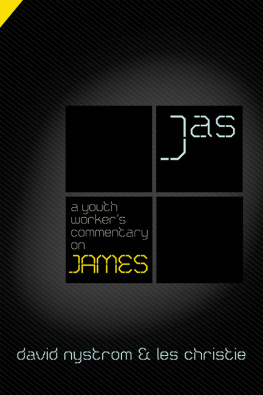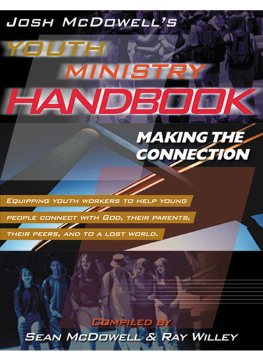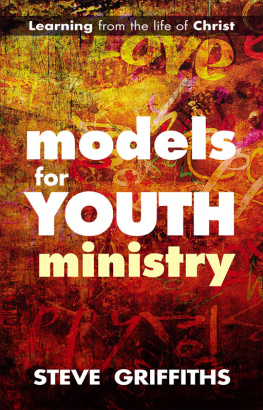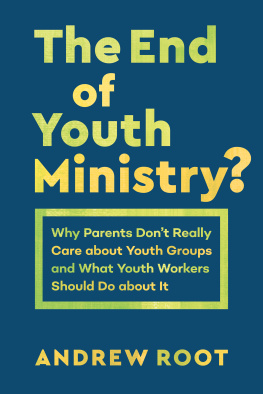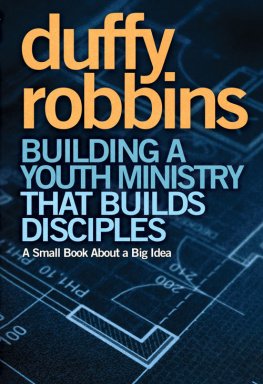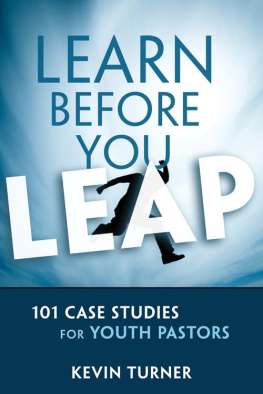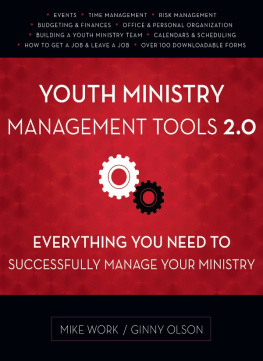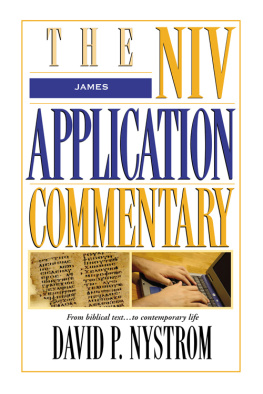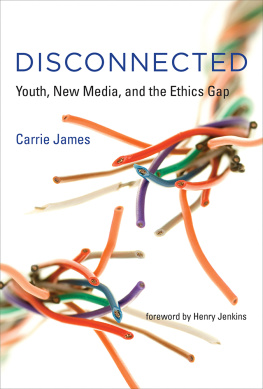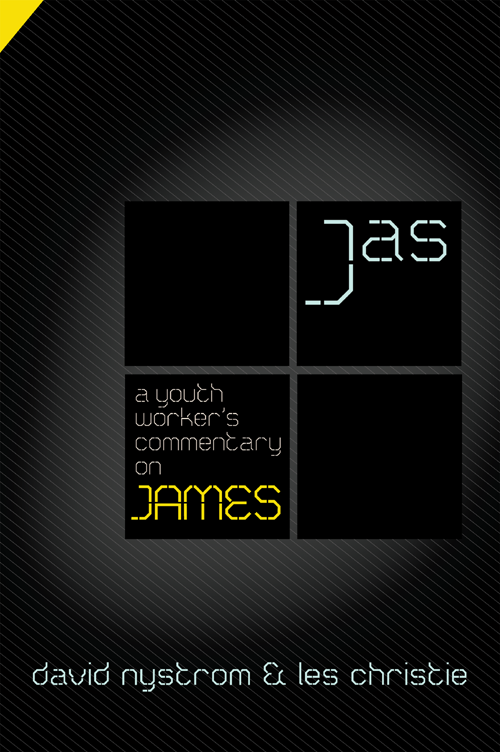This single-volume commentary on the letter of James is designed to reach and engage the hearts and minds of youth workers and their students. Our hope is that you will find it stimulating as you seek to unpack ancient biblical truth in todays world. Written with the busy youth worker in mind, our desire is that you find this book an invaluable aid in saving you time while preparing lessons and messages. You can also use this book for personal reading and edification, but the commentarys primary purpose is to stimulate small group discussions that will help you and your students grow in faith and knowledge of God and the Scriptures.
As in previous volumes in this series, well walk you through the letter of James a few verses at a time, thoughtfully considering the context and meaning of each element in James narrative. In each episode well take a rich look into the rationale and meaning of the text, including word, personal, and historical context studies. At the end of each section of verses, youll find a group of thought-provoking discussion questions to help get your students thinking and talking and connecting the biblical text with their world.
We hope youll move through James at a pace that best suits you and your group. You may want to do an episode a week for a few weeks, and then take a break from James and come back to it again later. Or, if you think your group could handle it, you could go through the entire letter of James, all 21 episodes. Or, you may want to select particular episodes from different sections of James.
When using the book in small group discussions, we recommend having a student read aloud a small portion of the text or the entire passage youll be tackling. Ask the group what key words stood out and have them highlight those words in their text and note any observations. Then discuss some of the Read Between the Lines questions at the end of each studythey invite your students to dig more deeply into the text. You dont have to use every question; just pick a few that might appeal to you or your group. Toward the end of your session, move into the Welcome to My World questions that invite students to apply what theyve learned, bringing the study home to where they live, work, and play.
James and His Letter
James is something of an oddity among New Testament booksits difficult to categorize and elicits a wide variety of descriptions. The text is simple and straightforward, marked by ethical teaching and authoritative statementsbut it seems to lack (at first glance) sustained theological arguments. These factors, in part, led Martin Dibelius to conclude that James is a jumbled series of unrelated bits of teaching material strung together. But Fred Francis has argued that the epistle is actually a carefully constructed document which conforms to established patterns.
The letter is addressed to a generic audiencethe twelve tribes scattered among the nations (1:1)rather than a specific church, as are so many of Pauls letters. The difficulties that James addresses likely touched many different early Christian communities.
First, its clear that the letter of James can be placed within the context of the earliest forms of Christianity. For instance:
- There are numerous, striking parallels to Jesus teaching in the synoptic Gospelsand seemingly in concert with the earliest texts. Perhaps the best example is James 5:12, which closely resembles Jesus words concerning oaths in Matthew 5:33-37. Therefore it is plausible that James had contact with an early source of Jesus sayingsperhaps the same source(s) the synoptic Gospel writers (especially Matthew) had at their disposal.
- Many other parallels between James and the synoptic Gospels bolster this conclusion: Believers are to rejoice in trials (James 1:2; Matthew 5:12); believers are called to be perfect/complete (James 1:4; Matthew 5:48); believers are encouraged to ask God, for God loves to give (James 1:5; Matthew 7:7); believers should expect testing and be prepared to endure it, after which they will receive a reward (James 1:12; Matthew 24:13); believers are not to be angry (James 1:20; Matthew 5:22); the poor are blessed (James 2:5; Luke 6:20); faith and action go togetherin fact, actions are the proof of true faith (James 2:14; Matthew 7:16-19); the rich are warned (James 2:6-7; Matthew 19:23-24); the humble are praised (James 3:13; Matthew 5:3); believers are not to slander (James 4:11; Matthew 5:22); believers are not to judge (James 4:12; Matthew 7:1).
- Both James and Paul are concerned with the relationship between faith and works, and while its probably wrong to read James as a reaction against Paul, James conclusions demonstrate his Christian environmenteven the date, perhaps. (Again, James appears to be a very early document.)
- When James calls Jesus glorious in 2:1, its difficult to miss the Christological path that also surfaces in the Gospel of John.
In short, there is ample evidence that James belongs to the world of the earliest forms of the Christian faith.
Second, James is familiar with Judaism. While James is unquestionably a Christian book, its roots in Judaism are deep:
- His picture of God is compatible with the Jewish understanding. He knows that there is one God (2:19). He knows the importance of the terms Almighty (5:4) and Father (3:9) used in reference to God. He teaches that God is merciful (4:8), and that he desires purity and humility in his people (4:8, 10). He is aware that the world tends to work in ways that oppose God and his intentions (4:4). Finally, he knows that God desires to give (4:2).
- James is aware of other characteristic features of the beliefs of first-century Judaism. He knows the term Gehenna often meant satanic power (3:6). He is aware of rabbinic theological and psychological anthropology, specifically the belief in the yesarimthe two impulses in each of us (1:14). (The first is pure or the good impulse [yeser ha-tov], while the second is the evil impulse [yeser ha-ra].) James knows that within first-century Judaism the poor had become associated with the righteous (2:5; 4:6). Finally, he knows about the perfect law, the law of the love of ones neighbor as found in Leviticus 19:18 (1:25; 2:8).
- James frequently quotes and alludes to the Old Testament. He makes reference to what Scripture says (4:5) and even quotes the Old Testament (4:6). His concern for widows and orphans (1:27) shows his familiarity with the prophetic notion of justice. Further, he refers to the great Old Testament heroes of the faith such as Abraham (2:23), Rahab (2:25), the prophets (5:10), and Job (5:11).
But on the other hand, James is no stranger to the Hellenistic world:
- The letter is written in fluid Greek using a wide vocabulary, word plays, and figures of speech. Yet it avoids complex words and sentences that mark the highest Greek literature.
- The letter shows an interest in Greek oral composition, using alliteration and rhyme.
- A number of metaphors are drawn from the Hellenistic Mediterranean world, which would have been lost on those from Palestine.
In short, James displays a Christian context, Jewish roots, and an aim toward the multilingual Mediterranean Hellenistic culture of the eastern Roman provinces.
In addition, the epistle of James is very practical (not an unfamiliar observation). That said, one challenge for those of us who want to learn from it is ignoring its practicalities in favor of overly academic concerns or self-righteous reinterpretation.

